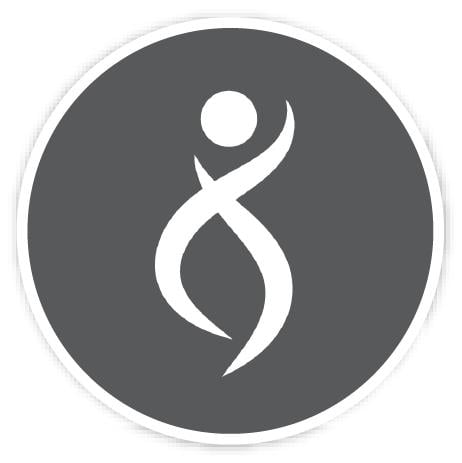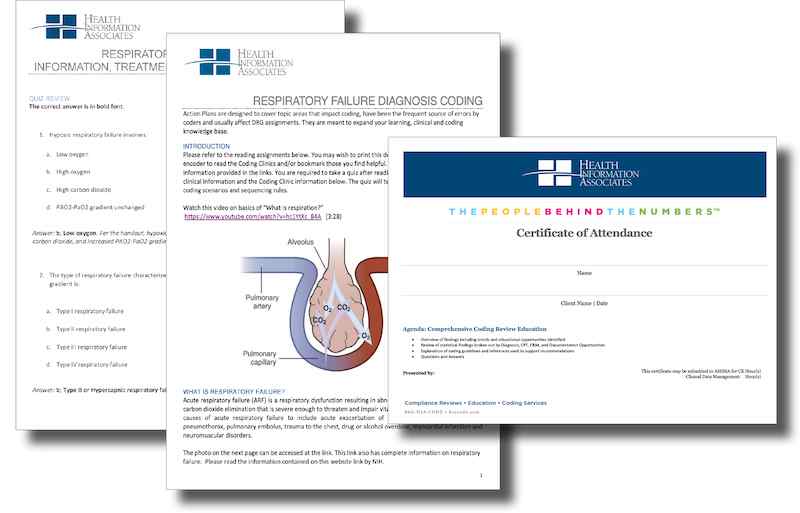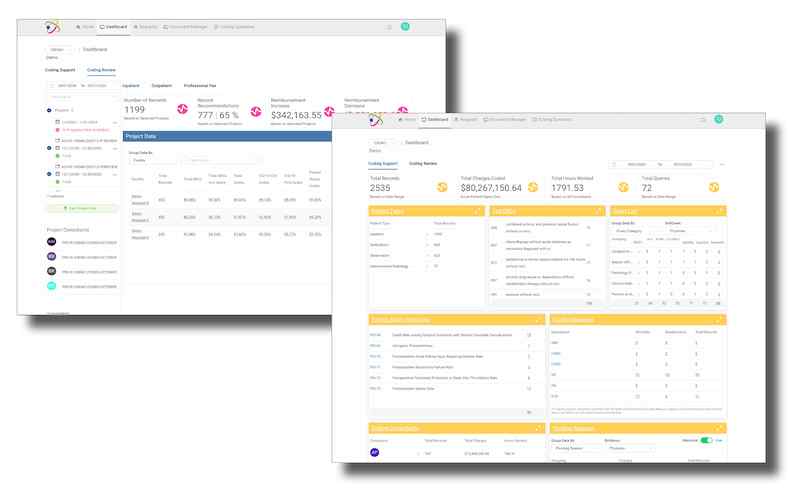Founded on Experience, Built with Integrity, Supported by Education.
We provide the highest quality coding review and support services in the industry.
Acute Coding Support
Secure and seamless Inpatient/Outpatient remote coding solutions. Learn more »
Acute Coding Review and CDI
Mitigate compliance risk and ensure appropriate reimbursements.
Learn more »
Profee Services
Compliance/financial reviews, education and coding support. Learn more »
Coding Education
One-on-one, group, and on-demand training. Learn more »
Ambulatory Services
Facility compliance and financial reviews, coding education and coding support.
Learn more »
Atom Audit
Medical coding audit and data analytics platform. Learn more »
BY THE NUMBERS
We pride ourselves on having the most experienced and well supported team in the industry.
10
Avg. Years Coder Experience
25
Avg. Years Consultants Experience
250
Annual CEUs Available
10,973,289
Avg. Monthly $ Dropped/Coder
Coding Audit Platform
Atom Audit
Our coding audit tool is a cloud-based application that allows
auditors to perform comprehensive medical coding reviews.

Cloud Based
No install required. Access from anywhere, anytime.
Increased Auditor Efficiency

Coder Response Workflow
Coder access included for full rebuttal response process.
Audit Insights
Results from any audit can be viewed online or downloaded via our Reports dashboard.WHAT WE OFFER
Our niche solutions
Total Outsource Coding Support
Single Path Coding
Interim Auditing
We provide experienced coding consultants when you need them most:
Rev Cycle Management
Denial Management
HIA’s Denial Management service will assist your organization in one or a combination of the following:
-
Review applicable denied and/or rejected claims
-
Determine if an appeal is warranted
-
Facilitate appeal process including authoring of appeal letter, tracking and adjudication
-
Analysis of denials and operations assessment to determine root causes.
-
Corrective action recommendations, education to applicable stakeholders
Case Mix Index
Are your coders capturing all CC/MCCs? If not, it could be negatively affecting your CMI and quality measures. In addition to reviewing CC/MCC code selections for both medical and surgical MS-DRGs, we:
- Investigate cases where there is a single reporting of a CC or MCC in a given time period as this can indicate a coding error or a provider documentation opportunity.
- Review a sudden spike or unusually high volume of MS-DRGs with CC/MCCs as this can be an indicator or an increased denial risk and can impact mortality index reporting.
- Evaluate outliers in the average length of stay where inconsistencies can identify coding and documentation opportunities.
WHY WE'RE DIFFERENT
Why HIA?
Our Education
Our Reporting
Our Support
HIAlearn.com - Over 200 Courses
Topics are derived from common HIA audit findings and range from the day’s most challenging procedures to wider reaching concepts such as Principal Diagnosis Coding.
Join more than 1,600 HIAlearn.com users today.
- One hour Courses
- Ten question quiz
- Submit for CEUs

HIA's secure client portal
Nucleus, HIA's secure client portal, allows you to run customizable reports while seamlessly managing your current monthly costs and upcoming projects. As a cloud-based platform, all of the documents are updated and logged in real-time. Nucleus makes it easy to share documents and reports with all assigned users and schedule services for up to a year in advance. Even better? We have specific reports for each department.
- Are you in Coding Leadership role? See a summary of findings, including overall accuracy and potential CMI impact.
- Are you in a Compliance role? Run DRG Rebill report to show you a detailed list of all accounts, including their potential financial impact.
- Are you a member of the C-suite? Get a global view of the project with easy-to-read charts and summaries.

More than just one coder
- Our Education Team has 70+ years of combined education experience.
- Our Corporate Team has 20+ year tenure.
- HIA has been in business for 30 years.

WHO WE WORK WITH
Settings

"Your audits were very helpful, we actually embrace them here! I have perfectionist coders (which is a blessing) and we learn something new every time. Thank you for the time and effort."
Coding Manager
Health & Surgery Center in Texas

"I wanted to tell you that you all WOW!'ed this group for sure! We were so impressed with the exit conference. HIA consultants keep it real, down to earth and fun! I will be happy to be a reference for any and all that are interested!"
Director of HIM
Community Hospital in Massachusetts

"I usually don't go out of my way to send a compliment, but in this case it is deserved. [HIA Coder] has far exceeded all expectations – attitude and productivity. If we could have ten more just like [her], we would. "
Coding Manager
Teaching Hospital in Washington

"We have had a wonderful experience working with your management staff and your coders! HIA has a well put together program that is heavy on education, your coders are always dependable and responsive to communication. You all put a lot of time into developing coder's skills with performing the quality reviews and we appreciate your efforts and look forward to continuing this relationship."
Director of HIM
Children's Hospital in Ohio

"Your team is helping us move forward with process improvements and ensuring our coded data is accurate and of top-notch quality [...] your reviewers have set the gold standard of what a consultant should be. They are both currently performing focused reviews on 100% of the work performed by a couple of coders not meeting our metrics to assess where those coders stand. Their work is very thorough and both are well rounded and bring a great deal knowledge within the coding field with them. I really appreciate having them with us."
Director of Coding
Large Health System with multiple locations in Georgia
Coding Education
Recent Blog Posts
Debridement is the medical removal of dead, damaged, or infected tissue to improve the healing of remaining healthy tissue. Debridement may be excisional or non-excisiona...
Coding for treatment of cerebral aneurysms may seem a little intimidating because the procedure is performed on the arteries of the brain, but understanding what an aneur...
With the implementation of ICD-10-CM came more codes for reporting the long-term use of drugs. There is now a code to report long-term use (LTU) of aromatase inhibitors.






















